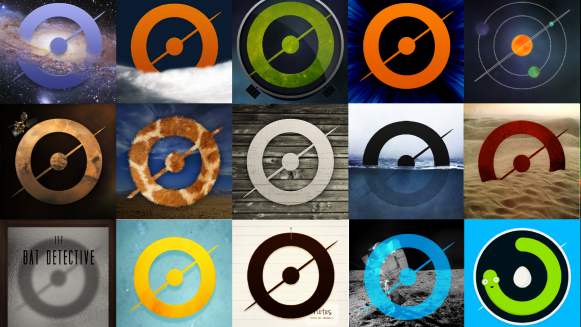Post written by Ben Gondrez, Digital Dome Manager.
Enter the Zooniverse
Have you ever wondered if there was an easy way to help scientists and researchers make new discoveries from your very own home? Well, whether you’ve had that thought or not, you can indeed be a vital participant in actual research through the Zooniverse! The Zooniverse is the world’s largest and most popular platform for people-powered research. By utilizing the power of volunteers – more than a million people around the world who come together to assist professional researchers – Zooniverse makes it easy for anyone, including you, to contribute to real academic research from their homes on their own computers. As many of us are spending more time than usual at home observing social distancing in response to COVID-19, now is the perfect time to become a citizen scientist and Zooniverse makes it easy for all ages of people to get involved. So how does Zooniverse work? Check out this short animation to learn more:
Ready to get started helping with real research projects from your own home? You can visit zooniverse.org to see all active projects including projects like Planet Four, a project exploring the surface and weather of Mar’s south polar region, or the project Bash The Bug, helping researchers find effective antibiotics to fight tuberculosis. Not sure where to start? Here are a couple of curated lists of projects and other links from Zooniverse to help you get started:
Designed for 5-12 year olds:
- Curated list of age-appropriate Zooniverse projects for younger learners
- Zooniverse-based Activity for 5-12 year olds
- Classroom.zooniverse.org
- Wildcam Labs
- Designed for 11-13 year olds, but the content can easily scale down for younger audiences.
- Great way to engage if you love looking at photos of wild animals and want to investigate ecological questions. The interactive map allows you to explore trail camera data and filter and download data to carry out analyses and test hypotheses.
- Educators can set up private classrooms, invite students to join, curate data sets, and get access to the guided activities and supporting educational resources.
- Individual explorers also welcome – you don’t need to be part of a classroom to participate. · Planet Hunters Educators Guide
- Wildcam Labs
Designed for 11-13 year olds:
- Planet Hunters Educators Guide
- A Zooniverse – NASA collaboration through which students learn about citizen science, explore how astronomers search for planets around distant stars, participate directly in the search for exoplanets through PlanetHunters.org, and then design and draw their own planetary system.
- Developed by Chicago’s Adler Planetarium Education Specialist Julie Feldt and Adler Director of Teen Programs Kelly Borden.
- Notes from Nature Activity
- Through this lesson students observe, record, and document specimens, become a part of the Zooniverse Notes from Nature project, transcribe specimens, connect art and science, and sketch birds in a science notebook.
- Developed by teachers as part of StudentsDiscover.org
- Floating Forests: Teaching Young Children About Kelp and Climate Change
Designed for teens and adults:
- Curated list of Zooniverse projects
- Zooniverse-based Lesson Plan for teens and adults
- Classroom.zooniverse.org
- Wildcam Labs
- Designed for middle school classrooms, but the content can easily scale up for older audiences.
- See description above.
- Astro101 with Galaxy Zoo
- Designed for undergraduate non-major introductory astronomy courses, but the content has been used in many high-school classrooms as well.
- Students learn about stars and galaxies through 4 half-hour guided activities and a 15-20 hour research project experience in which they analyze real data (including a curated Galaxy Zoo dataset), test hypotheses, make plots, and summarize their findings.
- Developed by Julie Feldt, Thomas Nelson, Cody Dirks, Dave Meyer, Molly Simon, and colleagues.
- For both Wildcam and Astro101 Activities
- Educators can set up private classrooms, invite students to join, curate data sets, and get access to the guided activities and supporting educational resources.
- Individual explorers also welcome – you don’t need to be part of a classroom to participate.
- Wildcam Labs
- Planet Hunters Educators Guide
- Designed for 11-13 year olds, but the content can easily scale up for older audiences.
- See description above.
- Notes from Nature Activity
- Designed for 11-13 year olds, but the content can easily scale up for older audiences.
- See description above.
- Snapshot Safari-based Lesson Plans and Interactive Timeline
- Developed by University of Minnesota PhD student Jessica Dewey
- Kelp Forest Ecology Lab
- Through the Zooniverse FloatingForests.org project, researchers are striving to understand the impact of climate change on giant kelp forests, an indicator of the health of our oceans. In this lab, students analyze Floating Forest and other ocean data to explore their own research questions.
- Developed by Cal State – Monterey Bay faculty Dr. Alison Haupt and colleagues
- NEH Teacher’s Guide for Digital Humanities and Online Education

